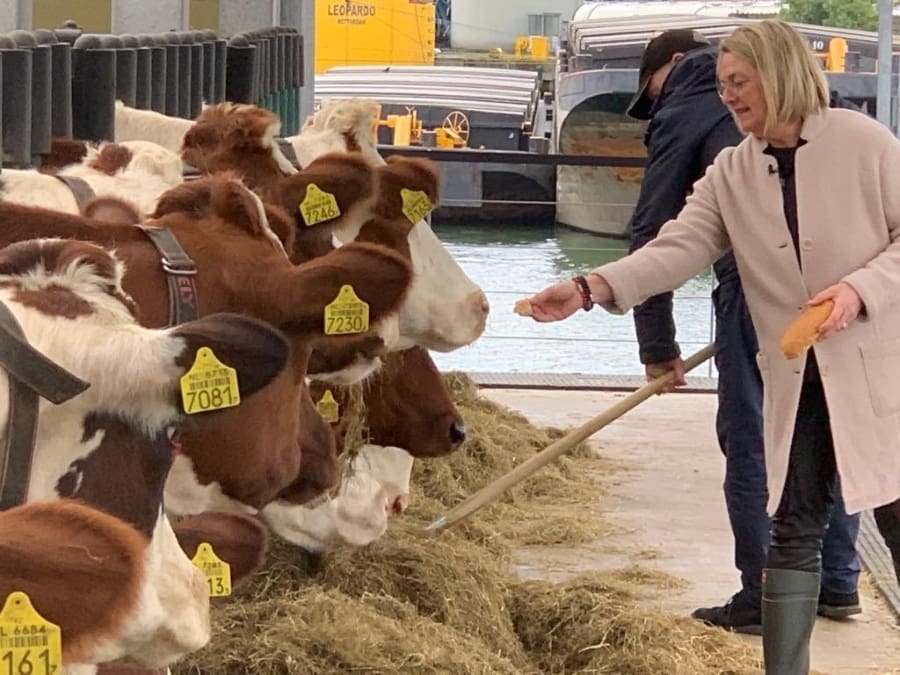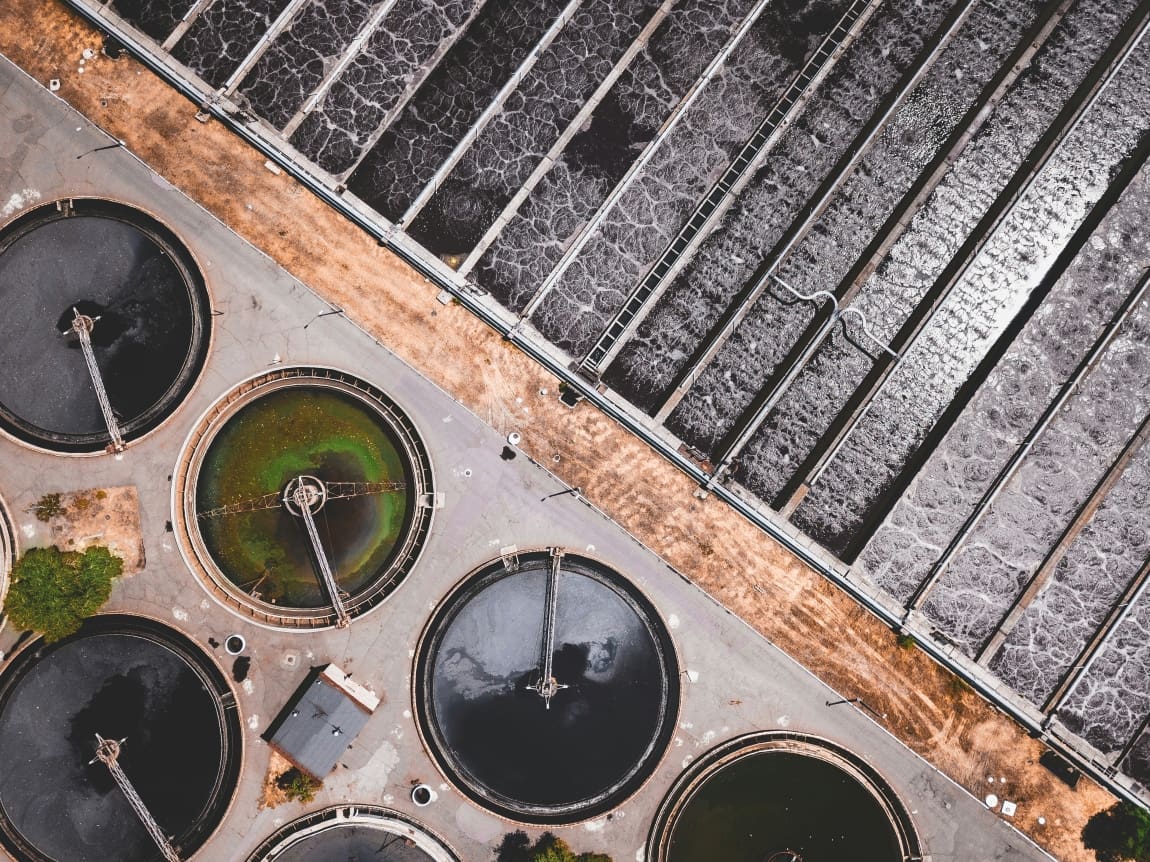By HELEN MASSY-BERESFORD | Horizon, the EU Research and Innovation magazine
The 34 dairy cows chewing the cud on a floating platform in the port of Rotterdam probably aren’t thinking about water scarcity – a major challenge in the world today – but they are participating in a Europe-wide effort to find solutions to this modern-day dilemma.
The cows’ home, the Floating Farm, is part of a broader project called WATER-MINING which received funding from the EU to investigate ways to address the increasing stress on Europe’s water systems.
Getting water wise
With global water demand set to exceed sustainable water supply by 2030, according to the 2030 Water Resources Group of the World Bank, finding ways to safely and efficiently reuse water is a matter of urgency.
Water resilience is also the theme of this year’s European Green Week which has launched the Europe-wide #WaterWiseEU campaign to stimulate an EU-wide conversation around water use today and in the future.
‘We have a water management problem in the world in general,’ said Dr Patricia Osseweijer, professor in biotechnology and society at Delft University of Technology and coordinator of WATER-MINING, which began in 2020 and will conclude at the end of this year.
‘The droughts we have had in recent years show that we need to treat our wastewater in such a way that it can be reused. Water is much more of a commodity now than it was before.’
Closing the circle
The Floating Farm is based on the principles of the circular economy in which resources are reused rather than discarded, aiming for self-sufficiency in both energy and water consumption.
It is experimenting with a low-energy technique to desalinate water from the port for use on the farm, and even a method of purifying the cows’ urine so it can be reused as pure water for the cows to drink and for irrigation and cleaning. The urine will also be “mined” in the process to recover nutrients and salts that can be used in fertilisers to help grow plants and herbs.

These are just a couple of the techniques that the WATER-MINING team is putting to the test to make sure that water is used in the most resource-efficient way possible and that nothing goes to waste, said Osseweijer.
The farm is testing out the concept of circularity on a more general level, too. The cows eat grass from Rotterdam’s football stadium and orange peels from supermarket juicing machines and the milk and yoghurts produced are sold to Rotterdam residents.
Building in self-sufficiency
Many of the techniques being used by the researchers were developed by earlier EU-funded projects. WATER-MINING’s innovation is to test and validate them all in full-scale situations in the pursuit of a circular water supply model that is financially sustainable, said Osseweijer.
Different approaches are being tested in so-called “Living Labs” – the Rotterdam farm and a solar plant in Almeria in Spain, as well as six individual case studies across Europe in Cyprus, the Netherlands, Portugal, Spain and on the Italian island of Lampedusa.
In each case study, engaging with residents, public officials and businesses has been crucial to understand what is at stake and how local needs can best be met effectively.
Work on defining the market models for reselling recovered nutrients will ensure that local communities benefit from the process and offset some of the costs of obtaining clean water.
In a case study in the Portuguese city of Faro, for instance, the wastewater treatment process recovered impressive amounts of Kaumera, a high-value biopolymer that has good potential for use as a fire retardant for building materials and for soil improvement in agriculture.
The techniques established by WATER-MINING researchers could also be put to wider use once the project has finished. The team is discussing its findings with the United Nations and exploring potential partnerships in Brazil, where public authorities in São Paulo are interested in the potential to better manage wastewater treatment and water reuse in a financially sustainable way.
Getting water-smart
WATER-MINING is part of a cluster of five EU-funded projects that are working to build a future “water-smart” society where all available water resources, including surface, groundwater, wastewater and processed water, are managed to increase water resilience and make sure that potentially valuable substances in wastewater are recovered. Called CIRSEAU, the cluster will present the combined findings of all five projects at a conference to be held in May 2025.
The ULTIMATE project is another of the cluster’s projects. Started in 2020 and running until October this year, it is focusing on the effective reuse of industrial wastewater through a framework it calls Water Smart Industrial Symbiosis (WSIS). It has nine large-scale industrial demonstration sites across Europe and beyond in the agro-food, heavy chemical, beverages and biotech industries.
‘What we’ve seen over the last couple of years is that there are quite a lot of local water reuse initiatives,’ said Dr Gerard van den Berg, ULTIMATE’s coordinator and international programme manager at the Netherlands-based KWR Water Research Institute. ‘But there’s still a huge challenge in bringing together the water sector and the industrial sector.’
The idea behind the project is to stimulate cooperation between different industrial sectors and the water sector to create economic value and increase sustainability.
One person’s waste…
‘The concept of the waste stream from one industry becoming a resource stream for another isn’t new, but globally there are not many examples – yet,’ said Dr Joep van den Broeke, senior researcher and project manager at KWR. ‘What we have tried to do is create examples of how industrial symbiosis can be successfully implemented.’
The researchers are using a mix of new and existing technologies to extract usable water, as well as energy and valuable compounds from industrial wastewater. Bringing those elements together makes the whole process more financially viable – and so more likely to be widely adopted.
Working with a cooperative that treats wastewater from 60 greenhouses, for example, the team used a process of electrodialysis to recover high-quality water from the wastewater in an energy-efficient way. The process also allows nutrients to be recovered separately for use as fertiliser while sodium, which is harmful to plants, is removed.
More work is needed before this technology is ready for wider use but, as water scarcity intensifies, growers and other water-consuming industries may soon have no choice but to embrace this type of solution.
Like the WATER-MINING team, ULTIMATE researchers believe growing awareness of water scarcity will give a greater impetus to finding alternatives.
‘Circularity is still seen by many industries as a challenge,’ said van den Berg. ‘Now, water is becoming scarcer though, we can see that water users are thinking about alternatives, including reused water.’
Research in this article was funded by the EU’s Horizon Programme. The views of the interviewees don’t necessarily reflect those of the European Commission. If you liked this article, please consider sharing it on social media.
This article was originally published in Horizon, the EU Research and Innovation magazine. Republished on Muser Press under the Creative Commons Attribution 4.0 International licence.
More information: WATER-MINING; ULTIMATE; EU Green Week 2024; EU Water research and innovation; EU Mission- Restore our oceans and waters
Featured image credit: Ivan Bandura | Unsplash




